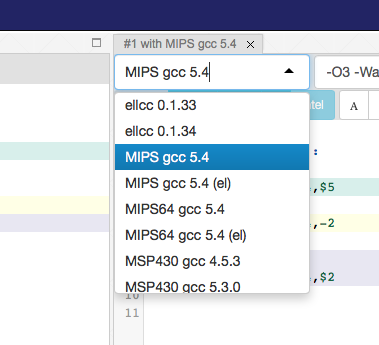Currently you’re generating code for x86-64 – you need to select a MIPS compiler from the popup menu above the assembly pane:

After you’ve done that you’ll probably see generated code like this:
$LFB0 = .
my_function(int, int):
$LVL0 = .
addu $2,$4,$5
$LVL1 = .
addiu $4,$4,-2
$LVL2 = .
j $31
addu $2,$4,$2
Note that the compiler has optimised away some of the redundant operations in the original C code. If you want to see an unoptimised version then specify -O0 in the compiler options and you’ll see something much less efficient, but closer to the original source:
$LFB0 = .
my_function(int, int):
addiu $sp,$sp,-16
sw $fp,12($sp)
move $fp,$sp
sw $4,16($fp)
sw $5,20($fp)
lw $3,16($fp)
lw $2,20($fp)
addu $2,$3,$2
sw $2,0($fp)
lw $2,16($fp)
addiu $2,$2,-2
sw $2,4($fp)
lw $3,0($fp)
lw $2,4($fp)
addu $2,$3,$2
sw $2,0($fp)
lw $2,0($fp)
move $sp,$fp
lw $fp,12($sp)
addiu $sp,$sp,16
j $31
nop
